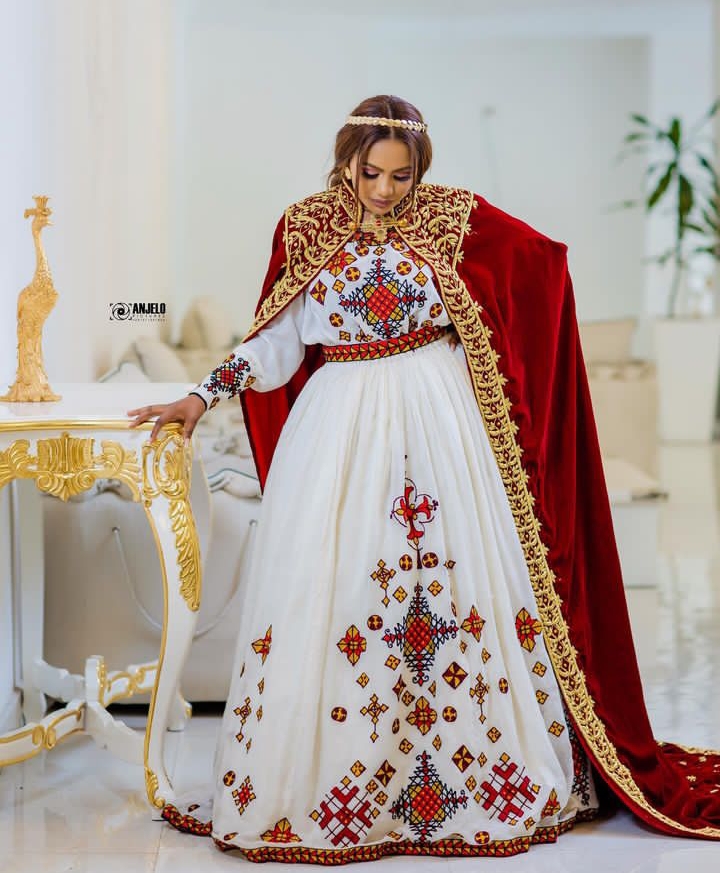Ethiopian Clothes
Cultural Clothes


Ethiopian woman in Addis Ababa wears violet Habesha kemis. The ankle-length dress is usually worn by Ethiopian and Eritrean women at formal events, holidays, and invitations, and comes in many regional varieties. It is made of cotton fabric and typically comes in white, grey, or beige shades.In Ethiopia, the way of dressing is greatly influenced by several factors, majorly the climatic condition (which is greatly influenced by the landscape) and the culture of the people in a particular area. Even though there are still many people who think that all Ethiopians put on the typical snow-white attire, it is still difficult to point out a single traditional dress for all of Ethiopia. With that said, the Ethiopians generally wear the Habesha Kemis, which is the traditional dress of the Ethiopians. Cotton is the main material used in making this dress, giving it that unique and elegant appearance. Usually, the Habesha Kemis comes in white, light-brown, and gray colors.Traditionally, the dress runs down to the ankle and some shiny threads (known as tilet) are used to decorate the bottom of the dress and also around the middle. Nevertheless, when designing for men, the tilet is fixed at the collar and sleeves, not just at the bottom and around the middle. This gives the Habesha Kemis an astonishing appearance. Even though this attire originates from the northern parts of the country, each region has a slight modification to the dress. This dress is usually worn with netela, a scarf that is typically lighter and thinner than the dress. In order to make it complement any other outfit, the netela is crafted in bright colors.
👗for more visit this link